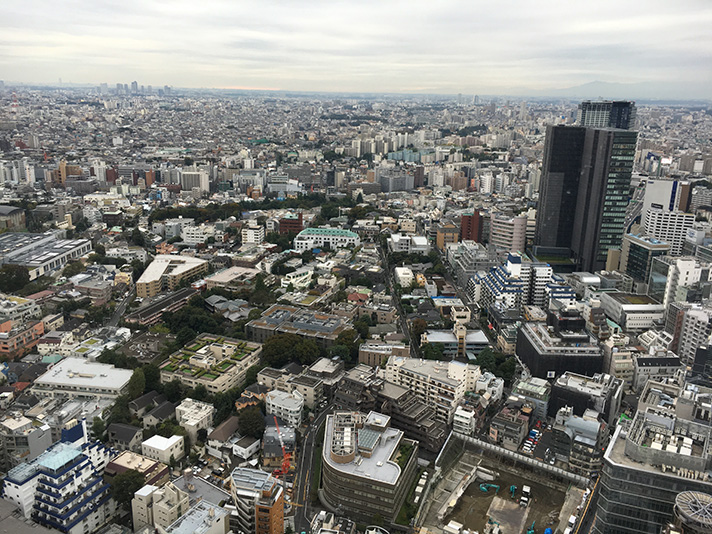
Legos not Lagos
Tell another visitor the truth about street skating in Tokyo and the response is between an eye-roll and defensive denial.
The truth: Tokyo is [deep breath] …not that good for skateboarding.
Ok, wait! Don’t start yelling! Are there spots? Yeah, there are. Are there tons of incredible skaters from there? Yes, a lot. Is there a vibrant skate scene? Yes, yes, and yes. Does it have quite literally the friendliest, most amazing locals on earth? Good God, a million times yes. Tokyo has incredible skateboarding culture, but when you find yourself a tourist there, you soon realize this previously unfathomable truth: you’re more likely to come home with five expensive jackets you don’t actually need, rather than five tricks you’re happy with for a video.
This past October was one of those great groupthink travel moments where many diverging crews all happened to be in Tokyo at roughly the same time (a la that one January when literally every New York skater was in Barcelona at once.) As we’d cross paths with newcomers, the following interaction became commonplace.
“Have you guys been skating a bunch since you’ve been here?”
“Er, um, not really, no.”
“What do you mean?”
“It’s um…kind of hard to skate here.”
Cue the “You guys are probably just hungover everyday,” or worse, the proverbial “We’re more ‘core’ than you” subtext that assures the denying party will have an easier time being productive in Tokyo than you have.
Until you run into them the next time, and they concede to reality.
A few factors are at play here. It is undetectable from the outside, but a lot of the spots you see in Japanese skate videos were never in Tokyo to begin with. And that’s for good reason, because cities like Osaka, Kobe and even the neighboring Yokohama have way more spacious plazas, spots, and leniency in terms of bust compared to Tokyo. It is not that there aren’t spots, it’s just that the layout and culture of the city is stacked against you skating them.
Which brings us to our next point, Tokyo is a bust. It is not even about waxing up a planter adjacent to some office building; some overeager cops will try to grab you simply for pushing down the street. Japan is heavy on respect and customs, so the kick-outs go beyond the “Guys, you can’t do that here” routine that New Yorkers are used to. The only option is to go full barge mode, which is what the GX guys famously did, and yielded one of the most anxiety-inducing clips in their entire oeuvre.
Beyond the bust, Tokyo is crowded, dense and shuts down less at night than even New York does. Imagine if skating New York was like skating midtown all the time — except with less open space — and you’re on the right track. That is not to say that you can’t venture out and find yourself somewhere productive and far, but it’s not like taking the train for 20 minutes to Bushwick or Harlem on a Monday afternoon to find a circuit of spots in a less-crowded corner of the city. One productive day, we rented a car to drive an hour to Chiba and skate what is one of the best ledge spots on earth (“Whoa, I thought this was in Shanghai.”) Another productive day, we loaded up a twenty-passenger van to drive an hour-and-a-half to one of the best D.I.Y. parks on earth. Public transport wouldn’t be much help for either of them. Starting to get the picture?
During the trip, we kept returning to a small batch of Tokyo skate parts filmed by American pros, only to realize all these harshly learned truths about the city were hidden in plain sight.
These three parts from Eli Reed, Quim Cardona and Silas Baxter-Neal tell the story of skateboarding in Tokyo as a tourist. For one, the stuff they all skate veers more towards marble nuggets sprouting from sidewalks and guardrails in back alleys — not holy grail spots that people travel across the world for. (How many truly “famous” Tokyo skate spots do you know off hand?) They’re also at least 70% filmed at night, and pay attention to the stuff Eli skates during the day. It’s all either under a bridge, or next to a highway.
Not sure about Silas, but Eli and Quim took two trips to film their parts. Watch the background of the clips and you’ll realize there are no BGPs and minimal pedestrians. Coming home with with a four-minute Tokyo part is a heist; the smaller the crew and the less people who see you, the higher your chance of success. Filming there is a solitary endeavor between filmer and skater, both of whom have to be dedicated to navigate the bust, the night and the cuttiness of the spots themselves, day after day.
But just LOOK at those parts. Tokyo looks stunning when someone does in fact succeed at getting a clip, giving worth to these longform pursuits of filming parts there (not unlike how a one-spot part yields a specific sense of accomplishment.) That Quim part is almost as good as his Non Fiction part; people in Japan still talk about that Silas part. Tokyo’s neon, tiles and tight spaces all paint the frame with a vibrancy that escapes sterile footage of Chinese marble.
The city truly looks unlike anything else on film, except maybe a more claustrophobic skate version of Blade Runner, which is why it continues to inspire so many people to conquer the difficulty of skating there. Tokyo is tough, but it’s never not worth it. And if it gets the best of you, buy those five jackets you don’t need, and hop on that beautiful bullet train to Kobe or Osaka.
EDIT: Adding Rich Adler’s “Night Prowler” part in here, which flew off our radar, but obviously fits the bill. (Shout out to Jesse Alba and Dick Rizzo for the tip.) I do believe Rich has been living in Japan full-time for a while now.
Related Dispatch From Japan: Yume Fame – Probably the Chillest D.I.Y. Spot in the World






How does that Blade Runner end quote go?
“It’s too bad you won’t skate, but then again who does?”
The old Gravis Dylan Filter Tokyo video gives you a feel for how crowded Shibuya and other areas are at night.
To deal with the difficulties posed by respect and customs, there is an alternative to the rude GX1000 barge—cruiser wheels
Brandon Nguyen had a whole part filmed in Tokyo which was pretty good too. Also, not american, but the Pass~Port Tokyo clip is one I watch often, they got a lot of good stuff.
honestly what in the fuck do you new york skaters do for work that you can just coincidentally “run into each other” in countries across the world?
New York skates are all sex workers you idiot.
Chachi Masserati
Dick Rizzo
Nik Stain
You think these are our real names?
L O L
Clearly youve never seen their p&ls on their merch ha
https://www.youtube.com/watch?v=RSb-SdBXMjA&t=193s
y’all forgot this, also can someone @ me if that diego line spot where he does the switch front big over the rail, that tokyo or ?
94% sure that’s Osaka. The tailslide up, switch back tail off line he does immediately after is 100% Osaka.
“Yeah it’s a really unique place with beautiful architecture, and really great spots. It’s still hard to skate though, because we’d get kicked out of spots at like 4 a.m. in 10 minutes.”
From an old Silas interview where he talks about the Japan part: he and the filmer had an apartment for a month downtown. They’d head out on bikes after dinner and comb the city for spots.